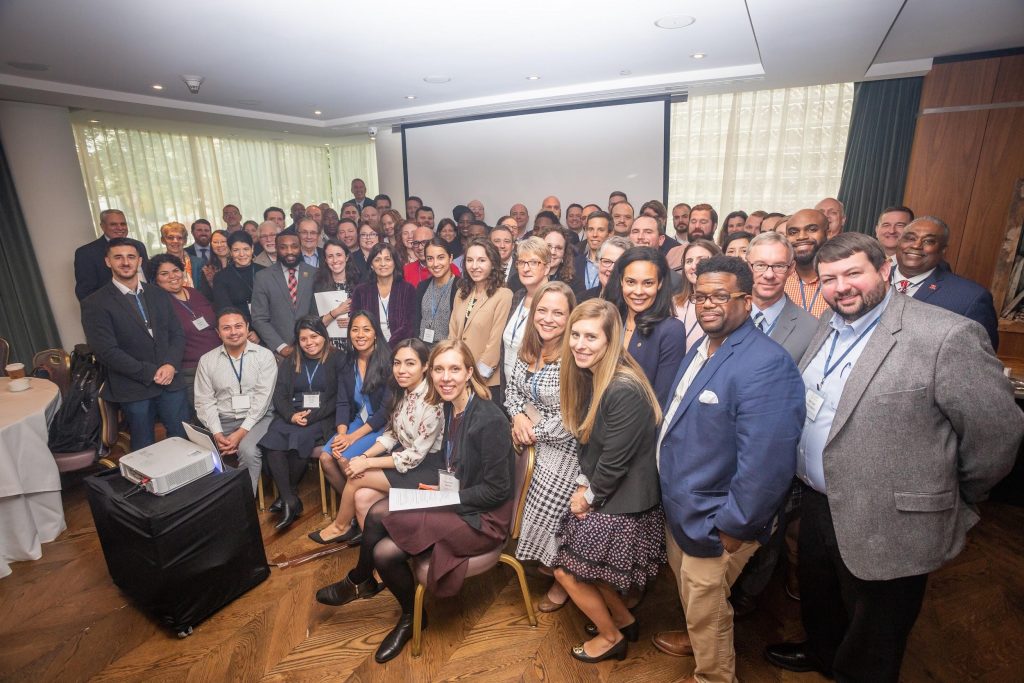Flipping the Script From Obligation to Opportunity: The American Talent Initiative’s Inaugural Veterans Community of Practice Convening

By Elizabeth Banes, Sindy Lopez, & Emily Schwartz, Ithaka S+R
This post was originally published on the Ithaka S+R website
United States military veterans are underrepresented at high-graduation rate colleges and universities, with only one in ten veterans attending institutions that graduate at least 70 percent of their students. And yet, we know that veterans who do attend these colleges and universities thrive. In fact, student veterans are 1.4 times more likely to earn a certificate or degree than adult learners overall, and student veterans have an average GPA of 3.34, compared to the average for traditional students of 2.94. Not only do student veterans succeed when they enroll, but they enrich the experiences of all students on campus.
To address these inequities, the American Talent Initiative (ATI), a national coalition of high-graduation-rate colleges and universities that have pledged to increase opportunity for low- and middle-income students, launched a Veterans Community of Practice, bringing together 40 members who are focused on increasing access and success for student veterans. To date, members of the community have come together on two different occasions to set objectives for the work and share best practices. Members have also participated in the first iteration of an annual veterans data collection and have begun incorporating veterans-related goals into the broader goal-setting frameworks for their institution.
This Veterans Day, we wanted to share the exciting progress of the community. On October 29th, we hosted the inaugural full day convening for the community, bringing together 85 participants from ATI institutions and external organizations for a day of collaborative discussions about strategies for enrolling additional student veterans and supporting them on campus. The goals of the convening were to (1) provide the opportunity for members to discuss challenges and best practices in improving veteran student outcomes; (2) learn effective strategies for veteran enrollment and success from guest speakers, experts, and service organizations; and (3) conduct action planning that can advance institutional practices that support veterans.
In this blog post, we share key takeaways from the full day meeting. We then share a recap of the meeting agenda and some details about the future plans of the community.
Key Takeaways
In reflecting on the meeting, some key takeaways emerged:
• As keynote speaker, Mike Haynie, founder and Executive Director of Syracuse University’s Institute for Veterans & Military Families, reiterated the motivation for enrolling more veterans should not derive solely from a sense of duty and obligation, but should instead come from a recognition that supporting veterans at higher education institutions is an incredible opportunity to elevate the quality of our institutions. Veterans enrich our communities by offering diverse perspectives, maturity, and leadership.
• Enrolling and graduating more student veterans is an effective means of contributing to ATI’s collective goal to attract, enroll, and graduate an additional 50,000 more low- and moderate-income students by 2025. It became increasingly apparent that there is significant intersectionality between veterans and other underrepresented student groups, such as first-generation and Pell-eligible communities. ATI members can draw on their respective experiences in supporting underrepresented students when devising pathways and support systems for student veterans.
• It is important that the whole institutional community—from the President, to financial aid officers, to admissions staff, and beyond—can articulate a shared rationale for why they are embarking on a strategy to enroll more veterans. Support from senior leadership is critical, as is having dedicated resources for this effort.
• The meeting’s sessions focused both on improving access for and enabling the success of student veterans. The ultimate goal is not just to enroll, but to graduate more veterans, thereby empowering them to become leaders in our society.
• One of the most challenging aspects in enrolling student veterans is the highly complicated web of institutional, federal, and VA benefits available to them. Nevertheless, it is essential that institutional representatives understand their students’ benefits and ensure that student veterans have access to the benefits owed to them; failing to do so risks jeopardizing the academic future of these students. Salient strategies for institutions to consider include: 1) creating a system for coordination across all offices on campus that interact with the benefits process, 2) identifying a point person for student veterans who is not the institution’s certifying official, to facilitate the holistic/coordinated approach, 3) turning to other institutions for support, and 4) using student peer mentors for troubleshooting benefits issues to help veterans feel supported.
• There are numerous external organizations focused on student veterans, and collaboration with these experts is an important strategy for institutions to consider. For example, Service2School, which provides free application counseling for veterans, has worked with thousands of veterans interested in attending high-graduation rate institutions and partners directly with schools looking to expand access. The Posse Veterans program also collaborates with institutions, bringing a cohort of veterans to each of its partner institutions. Students in the cohort receive coordinated support and supplemental funding.
• Despite varying levels of experience, the meeting participants are committed to welcoming student veterans at their institutions. This meeting provided a forum for members to learn from one another, and identify next steps for their respective efforts.